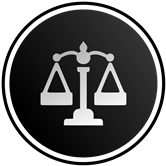Updated on November 01, 2025 05:33:18 PM
A trademark is a valuable symbol that helps to represent a business and provide a standout position in the marketplace. In this competitive commercial era, there is a higher possibility of infringement that can be done directly or indirectly. It is an illegal activity where a trademark is used without the permission of the trademark owner. Due to this unauthorised use, the brand can face reputation damages, and legal & financial consequences as well.
In this article, we will get a look at trademark infringement, its types, infringement, penalties and procedure for filing a complaint against this infringement. It is crucial for businesses to get a better understanding of it to safeguard their brand and maintain their competitive edge in the marketplace.
A trademark is a symbol or mark that distinguishes a product or service from others. It can be a word, phrase, a combination of colours, the shape of the product or three-dimensional image. Trademark registration in Delhi aids in determining a particular brand and creates trust among the target audience.
There are several kinds of Trademark, but some are very common these are given below:
Trademark infringement means using a registered trademark on/with products and services in a manner that leads to confusion and deception about its source by any unauthorised person commonly called an infringer. Trademark infringement happens when an infringer uses it without the permission of its owner for commerce or to deceive the common public and create confusion with the registered trademark. It results in a loss of finance and goodwill to the business.
For example, the bitten Apple logo is the registered trademark of the company, Apple. When another company uses a similar logo on their products and services, it is considered trademark infringement. Either be used on the same type of products (electronics) or even on different ones like clothing. Then also, it would be an infringement if it confuses the public, and they might consider purchasing the cloth under the impression of being sold out by Apple.
There is strict punishment for those infringers under the law. But before that, we should know about the types of infringement in India.
Section 29 of the Trademark Act, 1999 lays down the law related to direct infringement of the trademark. As per the law, direct infringement has been defined in the following cases:
InInfringement of trademark not only happens when an unauthorized person uses your registered trademark without your permission but also some special cases fall into this category. Trademark Infringement can happen in any of the three cases of trademark registration:
Situation: When you have a registered trademark, and someone infringes it. Infringement can be direct or indirect. You already have an idea about direct and indirect infringement, as discussed above.
Remedy: In this case, you can file a suit for trademark infringement in the district court. The process for filing such a suit will be discussed in detail later on in the topic.
Situation: When you have used your trademark for a long time but have not registered it, now someone else either uses it or tries to register it.
Remedy: In case someone tries to register it, then you can file Trademark Opposition against it. If neither you nor the party tries to register it, you should first apply for its registration and then file a suit against the other party (infringer).
Situation: When someone has registered a trademark that belongs to you. It means you have been using your trademark for a long time but now a second party has registered it under their name.
Remedy: You can file a rectification application with the registrar to cancel the registration or to transfer the registration to you.
In India, trademark Infringement is a cognisable offence (cases where police have the authority to arrest without a warrant). The infringer can face civil as well as criminal charges for the same.
The step-wise process of filing a complaint of Trademark Infringement is given below:
Analysing and gathering information is the vital step for filing a complaint against Trademark Infringement. It serves as a backbone of the case that proves the applicant’s side. To build a strong case, the applicant must collect information that clearly proves the violation or Infringement.
This evidence includes several things such as photographs, product labels, advertising materials, website screenshots, purchase records, Trademark Registration documents, communication records, marketplace listings, financial records, etc. This collection of data provides a thorough picture that is essential for proving any legal claim of Infringement.
As an applicant, you must seek a professional consultant from an expert Trademark attorney. They are specialists in dealing with such cases and provide a legal way to handle the Infringement Act. Their advice can help you make decisions and can also alert you to potential risks and benefits.
Litem Legalis will be your best choice as a Trademark Attorney. It will help you with the careful planning of all necessary documentation along with providing legal advice, ensuring that your case is well-supported.
Before filing a complaint, the applicant or attorney (on behalf of the applicant) must send a Cease and Desist Letter to the infringer. The Cease and Desist notice is a formal letter that warns the recipient about outlawed activities that violate a legal authority's intellectual property.
The letter must be clear and in threatening-free language. It should include all the issues that could harm the applicant brand’s reputation. This serves as a warning and demands to immediately stop the misuse of the other's rights.
Even after sending a Cease and Desist Letter, if the infringer does not stop using the Trademark, the Trademark holder takes a step toward filing a complaint. At this stage, the owner files an application/complaint against Trademark Infringement in the District Court.
This application should include all important information and proof that supports your claim. To build a strong legal case against Trademark Infringement in court, it is crucial to make sure this application is comprehensive and well-prepared.
Just After the filing complaint the judge first examines all the similarities or claims mentioned during the filing of the application/complaint. After examination, the judge will send the notice to both parties and conduct a hearing where they both get the chance to prove their side.
During the hearing procedure, the applicant and the third party (infringer) submit some documents as evidence. If the court is satisfied with the applicant’s evidence, they will make a judgement in favour of them; otherwise, the complaint can be dismissed as well.
The court gives its decision after hearing the arguments from both parties. This judgement establishes whether an Infringement came up and specifies any appropriate remedies or penalties.
In the end,Trademark infringement is an attack on brand identity,financial stablility and customer trust.Businesses must know the type of infingement including direct and indirect and use of legal protections under the Trademark Act, 1999 which includes fines, imprisonment and injunctions to prevent unauthorized exploitation.In case of brand infringement swift legal action supported by solid evidence is vittally important to protect your brand and market reputation.Protect your business now and consult with Litem Legalis to protect your intellectual property rights.

Legal Consultation

Expert Lawyers

Lowest Fees

Quick Process
Trademark infringement refers to the unauthorized use of a registered trademark by another party in a way that causes confusion among the public. This misuse can harm the brand’s reputation and lead to financial loss.
Direct Infringement is illegal usage of a trademark which creates confusion.Indirect Infringement includes the infringement that is indirect or through a another source where someone aids or influence the direct infringer.
Yes. Even if your trademark is unregistered, you can take legal action under “passing off” laws if you’ve used the mark for a long time and someone else tries to use or register it.
Disclaimer: The content provided on this site is intended for informational purposes only. Accessing or utilizing this site and its materials does not establish an attorney-client relationship. The information contained herein does not constitute legal or professional advice and should not be relied upon as such. It is not a substitute for obtaining legal counsel from a qualified attorney licensed in your jurisdiction